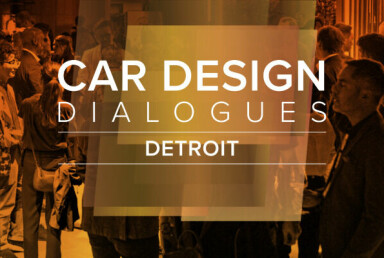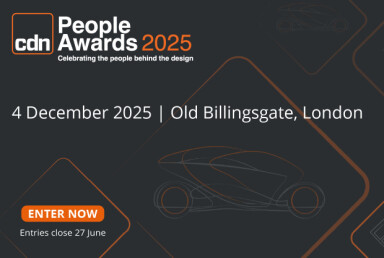How Porsche integrates design and production

A close relationship between Design and Production helps Porsche to balance technical feasibility with creative innovation
In an article originally written by our sister publication Automobil Produktion, it becomes clear that Porsche places a significant emphasis on connecting various departments beyond design. It might seem obvious, but a beautiful, innovative design stands no chance of making it to production unless it aligns with what is feasible from a production standpoint. Rather than crossing fingers and hoping for the best, Porsche's design leaders ensure various departments are brought in early on to avoid frustrating — and costly — last minute changes at a late stage. AP editor Timo Gilgen was on the ground in Leipzig.
It is one of the quietest places in the factory – almost eerie in contrast to the rhythm of the production lines. Here, in the quality control department of the Porsche factory in Leipzig, the newly manufactured Macans and Panameras stand in brightly lit areas, every joint and every light edge in view. At the end of the line, Porsche checks once again whether every detail meets its own quality standards. In this calm atmosphere, it becomes clear how closely form and production are linked at the brand – not just on the assembly line, but from the very first stroke of the pen.
The occasion for these impressions was the two-day workshop ‘Design meets Production’, during which Albrecht Reimold, member of the executive board for production, and Peter Varga, director of exterior design, answered questions from Automobil Produktion.
Early integration instead of late compromise
At Porsche, vehicle development follows the principle of simultaneous engineering. This means that designers, production planners and toolmakers work closely several years before production starts. Development, sales and finance are also involved from the outset to ensure an idea becomes a marketable product. The way people interact with each other is important here. There are no traditional boundaries between ‘creatives’ and ‘technicians,’ but rather a shared understanding of roles. Albrecht Reimold describes this collaboration as one characterised by mutual respect: "The dialogue at the very beginning is the most important. This is the only way to keep pushing the boundaries between technical feasibility and design requirements."
Testing on the clay model.
Production contributes its knowledge of manufacturing limits not to restrict designs, but to make them feasible. Peter Varga emphasises that many departments are involved not to slow down the creative process, but to enable it.
"At first I was surprised by how many people wanted to have a say in what a car should look like. But today I know: it's important and constructive,” says Varga. The common goal remains to preserve the brand's design DNA while developing it in such a way that it can be sustained in series production he adds: “We have a very clear strategy for our products – with a design DNA that we consistently follow."

In operational terms, this means that the Style Porsche design department works in parallel on several levels at an early stage. While the first sketches are being created in the studio in Weissach, digital models are being built and real clay models are being modelled on a 1:1 scale.
At this stage, it is no longer just about the aesthetics of a line, but also about whether the designs will actually translate into production. This is ensured by the Strak department (strake in English, in reference to technical drawings), which sits at the interface between design and production. It checks whether the planned shapes can be implemented in sheet metal and what adjustments are necessary to do so.
At the same time, the first engineers in production planning begin extensive simulations. They use computers to analyse how individual sheet metal parts can be formed, what forces are at work during pressing and where material limits could be reached. In this way, design and production do not follow one another, but grow together from the outset.
Despite all the digitalisation, we still have to get our hands dirty
From sketch to zero gap
The design process itself remains deliberately two-pronged at Porsche. In addition to digital tools that allow designs to be displayed in high resolution on the Powerwall, analogue methods continue to play a central role. Designers work with pen, paper and clay models to physically experience the shapes and immediately assess the proportions.
Peter Varga describes how seemingly simple surfaces often take many days of work. Small elevations or minimal counter-curves determine how precise a line appears and how light runs across the surface. "Our design language is complex – even if it ultimately appears simple and clean," says Varga. "That's why, despite all the digitalisation, we still have to get our hands dirty: the clay model remains indispensable for our design language."

Digital design
Virtual models, computer-aided simulations and, more recently, AI-supported tools speed up the work, but they cannot replace experience with materials and tools. ‘"We use AI every day – it's not rocket science, but a tool for variants and visualisation," says Varga. "Designers are professional artists – with schedules and delivery deadlines."
Balancing speed and sensitivity
This is evident not only in the design studio, but also in series production. Extremely narrow gaps and clean joints have long been among the brand's visible hallmarks. Porsche describes them as part of a vehicle's ‘legibility’ – that is, the ability to recognise precision at first glance.
To create this impression, the exact edge lines and transitions must be defined during the planning phase. The so-called joint plan defines these specifications for each model. "The zero joint on the roof is two tenths – precision you can see and feel," emphasises Reimold. Particularly striking is the ‘king joint’ between the cockpit and door trim, which forms a clear line and is implemented in the factory with an accuracy of a few tenths of a millimetre.
Material as a design factor
The material in question plays a decisive role here. Porsche relies almost entirely on aluminium for the outer skin, "which offers the best combination of lightweight construction and forming behaviour," explains Reimold.
Despite those benefits, engineers note that the material places high demands on the process. Aluminium is more challenging to form than steel — it tends to spring back — and therefore requires particularly precise control of tooling. Reimold refers to this as the ‘golden solution’ because it allows weight advantages to be achieved without having to compromise on the brand's signature shapes. The bonnet of the new Macan is a good example. "It was a very demanding project," recalls Varga, "but together we brought it into series production."

At the same time, the material sets clear limits: small radii or extreme curvatures cannot be realised at will. It is crucial that the overall impression remains consistent. Designers and producers therefore often agree on intermediate steps that preserve the desired appearance while still ensuring reliable production. "I have learned an enormous amount about how to work with sheet metal and how beautiful shapes are really created," notes Varga.
The combination of proximity, high-precision technology and digital process control shortens the path from design to series production
Tools and the press shop play a central role
Toolmaking is an important link between the design idea and series production. Porsche has deliberately anchored this expertise in-house and significantly expanded it in recent years. "Taking over toolmaking was one of our best decisions," says Reimold. "It has allowed us to combine expertise, plant engineering and consulting under one roof." The department not only develops forming tools, but also plans and builds complete plants. The tools go directly from the factory in Schwarzenberg to the Smart Press Shop in Halle. There, body parts are manufactured on state-of-the-art presses.
"The Smart Press Shop is a model of success – flexible, fast and competitive," says Reimold. The plant is designed for flexibility, can change tools in a matter of minutes and supplies parts both for its own use and for external customers. The combination of proximity to the Leipzig plant, high-precision technology and digital process control creates a close interaction that shortens the path from design to series production.
Complexity where customers benefit
The balance between complexity and efficiency remains a constant topic. Complexity should be noticeable where it enriches the customer experience – for example, in the customisation of equipment and interiors. Where it offers no added value, it is deliberately reduced. "We have to master the complexity that the customer experiences; we consistently reduce invisible complexity," says Varga.
This idea also shapes the organisation of the plants. In Leipzig, vehicles with different drive systems run on a common line. This mixed production enables us to respond flexibly to fluctuations in demand while ensuring high capacity utilisation. This is made possible by a consistently standardised assembly architecture and seamlessly planned logistics processes.

Family feel
In terms of content, Porsche remains true to its line. "Every bold decision is also a risk – you can't do it without courage," says Reimold. Neither the entry into SUVs, the introduction of the Taycan or the Macan being launched as an EV were seen as breaks with tradition, but rather as extensions. "All models – whether electric or with combustion engines – are created from the same design signature and belong to the family," explains Varga.
In this context, Reimold speaks of ‘rounding off’, i.e. targeted additions within a clear brand core. At the same time, he emphasises that sustainability and resource efficiency remain central guiding principles. For example, aluminium residues from the press shop are recycled by type, and packaging material is reduced and reused.
Outlook: speed, modularity, individualisation
Porsche's chief production officer names three priorities for the coming years: faster development cycles, more flexible production systems and increased individualisation.
Markets are changing rapidly, regulations are becoming more complex, and customers expect shorter delivery times and more choice. To meet these demands, design and manufacturing must work even closer. The whisper-quiet quality control hall in Leipzig shows how this can be achieved. Here, the work is not loud, but concentrated – every detail, every line, every joint is checked. It is the place where it is decided whether what was designed in Weissach will also stand the test in Leipzig.
Ultimately, the impression is that Porsche does not see the connection between design and production as a contradiction, but as a shared craft. The precise transitions and harmonious proportions are the visible result of a collaboration that begins early and never really ends. Here, form is not decoration, but part of the art of manufacturing – and that is perhaps what makes the biggest difference.
The original article, written in German, is available below via our Ultima Media colleagues at Automobil Produktion.








